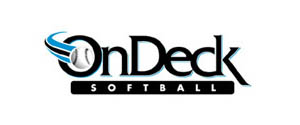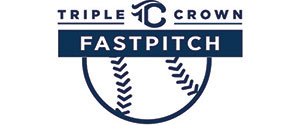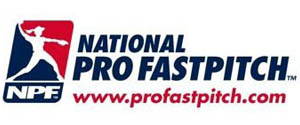C77fastpitch wrote:If you've been around very many private softball pitching coaches you'll know for the lack of a better term, it's a major Macho contest over who is the best. This is unfortunate and not needed. There are qualifications and standards that reasonable people can and should agree upon.
1) Does the pitching coach have a plan-This plan of action will identify goals, teaching strategies, benchmarks , and testing procedures denoting successful completion of each step of the program.
2) Can or could the coach demonstrate a reasonable proficiency in pitching- Why shouldn't the coach be expected to have at least mastered an elementary level of pitching skills following the same procedures she teaches her students.
3) Is what the coach teaches safe- Does the coach rely on physical therapist and orthopedic specialist for training advice.
4) Does the coach connect emotionally- Good coaches coach well, great coaches inspire.
5) Does the pitching coach network with other pitching professionals- Does the coach use Best Practice pitching concepts.
OTHER FACTORS
6)Does this coach'es reputation depend on the fame of a few of her most gifted pitchers- Gifted pitchers could learn from anyone, what about her average pitcher.
7) Does this coach'es reputation depend on her or his daughters pitching ability- The fact that this coach'es daughter was a good pitcher, may or may not be because her father is an excellent coach.
Fastpitch Discussions
Pitching coach Standards
19 posts
• Page 1 of 2 • 1, 2
I copied this from the IN forum since it is not regional in nature. Thoughts on it?
-

PDad - Premium Member

- Posts: 3439
- Joined: Sun Mar 29, 2009 4:52 pm
Oh PDad I wish you hadn't done that.
VETERANS....ALL GAVE SOME, SOME GAVE ALL
-

Tyler Durden - Premium Member

- Posts: 531
- Joined: Tue Feb 09, 2010 11:04 am
Ha TD!
I will say that down here in San Diego most pitching coaches are female and the handful of male coaches I know about are former players. This may very well be a regional thing. I guess a lot of dads of pitchers teach pitching in the midwest.
I will say that down here in San Diego most pitching coaches are female and the handful of male coaches I know about are former players. This may very well be a regional thing. I guess a lot of dads of pitchers teach pitching in the midwest.
-

eclipse09 - Premium Member

- Posts: 473
- Joined: Mon Apr 16, 2012 9:04 am
I figured that this post would trigger the MarkH signal - maybe it's not overcast enough in Texas for him to see it reflected off the clouds. In his absence, I will suggest that the best benchmark is comparing video and pictures of what the best pitchers do to what the coach is saying. Not a ton of high-quality slow motion videos of pitchers out there (that I've seen) but here's a couple:
https://www.youtube.com/watch?v=0OA6RfTre6M
https://www.youtube.com/watch?v=avcEmdx ... 396.208251
The obvious litmus test for me was always coaches that teach the wave through bowling motion vs internal rotation through release.
That said, C77 does raise some interesting points.
1) I like the plan - it's really easy to get into a mundane routine and forget about setting benchmarks and hitting them. This is also something any parent can ask a coach for and remind them to stick to.
2) Not sure if I would hold this as a requirement. The pitching coaches I've come across were all accomplished pitchers, but there are dedicated dads that became good hitting coaches (SSarge, for the old-timers). I've also come across accomplished pitchers who describe a motion different from what they really do.
3) Sounds great, but not sure how you assess safety other than history. Are there really PTs and orthopods out there who know enough about the fastpitch motion to provide advice beyond the most obvious considerations?
4) Can't argue with that.
5) I guess that would depend on who the coach was networking with, wouldn't it? Are there an agreed upon Best Practices? I've never seen it capitalized before.
6) I understand what this is getting at - I'm sure there are plenty of elite pitchers that became that way despite their coaching, not because of it. That said, how do you measure this? There's really no way of knowing why the elite pitcher is elite, or the average pitcher average - way too many variables.
7) This one goes without saying for anyone who has been around the sport for awhile, but hard to discern for newbie parents.
https://www.youtube.com/watch?v=0OA6RfTre6M
https://www.youtube.com/watch?v=avcEmdx ... 396.208251
The obvious litmus test for me was always coaches that teach the wave through bowling motion vs internal rotation through release.
That said, C77 does raise some interesting points.
1) I like the plan - it's really easy to get into a mundane routine and forget about setting benchmarks and hitting them. This is also something any parent can ask a coach for and remind them to stick to.
2) Not sure if I would hold this as a requirement. The pitching coaches I've come across were all accomplished pitchers, but there are dedicated dads that became good hitting coaches (SSarge, for the old-timers). I've also come across accomplished pitchers who describe a motion different from what they really do.
3) Sounds great, but not sure how you assess safety other than history. Are there really PTs and orthopods out there who know enough about the fastpitch motion to provide advice beyond the most obvious considerations?
4) Can't argue with that.
5) I guess that would depend on who the coach was networking with, wouldn't it? Are there an agreed upon Best Practices? I've never seen it capitalized before.
6) I understand what this is getting at - I'm sure there are plenty of elite pitchers that became that way despite their coaching, not because of it. That said, how do you measure this? There's really no way of knowing why the elite pitcher is elite, or the average pitcher average - way too many variables.
7) This one goes without saying for anyone who has been around the sport for awhile, but hard to discern for newbie parents.
-

jtat32 - Premium Member

- Posts: 456
- Joined: Thu Feb 12, 2009 1:53 am
OK you got me. Now it will be your fault. 
Here's a few more. http://imageevent.com/siggy/throwing/wi ... r2t1.cat_s
I agree understanding the biomechanics should be a requirement with not understanding external to internal rotation of the shoulder being a popular place to be clueless.
I agree there are no agreed upon best practices and some of the commonly agreed on best practices don't pass the logic test. Getting forward at release for the drop as an example. I blame this common misconception for the lack of kids who can throw a drop for a strike and still make you miss.
Here's a few more. http://imageevent.com/siggy/throwing/wi ... r2t1.cat_s
I agree understanding the biomechanics should be a requirement with not understanding external to internal rotation of the shoulder being a popular place to be clueless.
I agree there are no agreed upon best practices and some of the commonly agreed on best practices don't pass the logic test. Getting forward at release for the drop as an example. I blame this common misconception for the lack of kids who can throw a drop for a strike and still make you miss.
- Mark H
- Posts: 318
- Joined: Thu Apr 12, 2012 7:08 pm
Maybe C77 doesn't visit this forum. One can only hope 


- BB2830
- Posts: 82
- Joined: Mon Aug 05, 2013 12:26 pm
Here is my .02, I truly believe if a pitching coach cannot demonstrate what he or she teaches then they should not be teaching pitches or mechanics...However, there are acceptations to that rule (but very few) the reason I say this, is I get a lot of pitchers coming to me that are older 16 and 17. Wanting to learn a real riseball, (not that bullet pitch thrown upward and called a riseball) an actual riseball but unfortunately somebody taught them incorrectly so their pitching mechanics will not allow for them to throw a riseball without making some serious changes to their current mechanics. Now, its not impossible to make these changes at 16 or 17 but most young ladies are unwilling because its almost like starting over for some.
I see coaches teaching wrong motion and mechanics all the time and it just flat out makes me cringe. The truth is most parents are ill informaned about pitching and then some coach comes along and teaches there daughter a thing or two and little Suzy starts to pitch really well and starts to strike out kids in the lower age groups and blow balls by them (sound familiar). Until one day she moves up in division starts to face better batters and no longer blows balls by them instead she tries to throw harder to compensate and starts having shoulder issues and she never really reaches her full potential... The ability to throw hard is a gift in most cases that cant be taught and when I see a kid throw hard but does it with bad mechanics I think to myself how good could she have been if her mechanics were great. I see that all the time at the college level but I mostly see that with travel and high school teams, girls throwing hard but their mechanics are making them a very one dimensional kind of pitcher!!
To parents of young pitchers do your homework, look at the Cat Ostermans of the world is your instructor teaching those kind of mechanics to your kid? Can your coach throw the pitches they teach? Can they spin the ball correctly? There are lots of pitching styles in fastpitch that to me is what makes a pitcher unique and that is all preferance. But there are also absolutes when it comes to pitching, like a riseball has to spin backward, a dropball has to spin forward, a curveball has to spin sideways and a changeup has to be thrown without changing arm speed. Here is the kicker, those pitches have to be thrown without changing your pitching motion. Look for a coach that teaches these basic fundamentals because they truly are what you see every great pitcher male and female do. Not making this up, look up Cat Osterman, Doug Gillis, Mike White, Bill Hillhouse, Jennie Finch you'll see different pitching styles but all the same basic mechanics.
1.) Throw from an open position
2.) Throw through your hips not around them,
3.) Your arm should have a smooth whip through your hips (not stiff armed) hip follows the hand
4.) Fingers spin the ball in the direction you want it to break (don't force your pitch)
5.) Arm finishes across the body (not straight up) and your on a firm front leg (not stiff)
Good luck parents hope you enjoyed my rant
I see coaches teaching wrong motion and mechanics all the time and it just flat out makes me cringe. The truth is most parents are ill informaned about pitching and then some coach comes along and teaches there daughter a thing or two and little Suzy starts to pitch really well and starts to strike out kids in the lower age groups and blow balls by them (sound familiar). Until one day she moves up in division starts to face better batters and no longer blows balls by them instead she tries to throw harder to compensate and starts having shoulder issues and she never really reaches her full potential... The ability to throw hard is a gift in most cases that cant be taught and when I see a kid throw hard but does it with bad mechanics I think to myself how good could she have been if her mechanics were great. I see that all the time at the college level but I mostly see that with travel and high school teams, girls throwing hard but their mechanics are making them a very one dimensional kind of pitcher!!
To parents of young pitchers do your homework, look at the Cat Ostermans of the world is your instructor teaching those kind of mechanics to your kid? Can your coach throw the pitches they teach? Can they spin the ball correctly? There are lots of pitching styles in fastpitch that to me is what makes a pitcher unique and that is all preferance. But there are also absolutes when it comes to pitching, like a riseball has to spin backward, a dropball has to spin forward, a curveball has to spin sideways and a changeup has to be thrown without changing arm speed. Here is the kicker, those pitches have to be thrown without changing your pitching motion. Look for a coach that teaches these basic fundamentals because they truly are what you see every great pitcher male and female do. Not making this up, look up Cat Osterman, Doug Gillis, Mike White, Bill Hillhouse, Jennie Finch you'll see different pitching styles but all the same basic mechanics.
1.) Throw from an open position
2.) Throw through your hips not around them,
3.) Your arm should have a smooth whip through your hips (not stiff armed) hip follows the hand
4.) Fingers spin the ball in the direction you want it to break (don't force your pitch)
5.) Arm finishes across the body (not straight up) and your on a firm front leg (not stiff)
Good luck parents hope you enjoyed my rant
- curveballerguy124
- Premium Member

- Posts: 390
- Joined: Tue Feb 09, 2016 5:53 pm
http://imageevent.com/siggy/throwing/wi ... =4&s=0&z=9
I would say in this clip the hip begins rotation, transfers it's energy quickly up the torso, then the arm comes through at the end of the kinetic chain and the hip rotates some more as a follow through energy dissipation mechanism. That's what I see.
Would you speak to the role of external to internal rotation of the shoulder in windmill pitching?
I would say in this clip the hip begins rotation, transfers it's energy quickly up the torso, then the arm comes through at the end of the kinetic chain and the hip rotates some more as a follow through energy dissipation mechanism. That's what I see.
Would you speak to the role of external to internal rotation of the shoulder in windmill pitching?
- Mark H
- Posts: 318
- Joined: Thu Apr 12, 2012 7:08 pm
Here are my thoughts on that.....When you whip your arms through your hips correctly you feel almost no pressure on your shoulder and your hand naturally finishes with the thumb down pinky up (internal rotation) and you get what I like to call natural movement which to me is the best kind. For that reason I like to throw that pitch as a two seam drop (I encourage my players to experiment with a two seam drop as well). However, when I throw my four seam drop ball my thumb stays pointed toward third base (external rotation/peel drop) I still throw through my hips no pressure on my shoulder but my forearm and bicep tend to get tired a little quicker. But when you throw a peel drop correctly it tends to become a heavier ball because of the downward rotation and harder for better batters to pick and square up on.
Now, I'm assuming that's what you are talking about when you say internal/external rotation of the shoulder. In my opinion internal rotation (thumb down pinky up) produces better movement and easier to consistently keep the ball low and away from a righty. Downside of that pitch is, you tip your pitch and better batters WILL pick up on that. External rotation pitch (peel drop) you get a heavier ball with good break that's hard to read even by good batters and hard to square up. Downside to that is its easy to be inconsistent with that pitch and once your forearms tires out you lose all control!!
P.S. I couldn't open your video, I hope this is what you meant?!?
Now, I'm assuming that's what you are talking about when you say internal/external rotation of the shoulder. In my opinion internal rotation (thumb down pinky up) produces better movement and easier to consistently keep the ball low and away from a righty. Downside of that pitch is, you tip your pitch and better batters WILL pick up on that. External rotation pitch (peel drop) you get a heavier ball with good break that's hard to read even by good batters and hard to square up. Downside to that is its easy to be inconsistent with that pitch and once your forearms tires out you lose all control!!
P.S. I couldn't open your video, I hope this is what you meant?!?
- curveballerguy124
- Premium Member

- Posts: 390
- Joined: Tue Feb 09, 2016 5:53 pm
https://www.google.com/search?q=interna ... Bd0QsAQIIg
https://www.google.com/search?q=externa ... CKcQsAQINA
I mean the terms in the biomechanically accepted literal sense but that's ok.
What did you think of my description of what I see in Cat's pitching clip?
https://www.google.com/search?q=externa ... CKcQsAQINA
I mean the terms in the biomechanically accepted literal sense but that's ok.
What did you think of my description of what I see in Cat's pitching clip?
- Mark H
- Posts: 318
- Joined: Thu Apr 12, 2012 7:08 pm
19 posts
• Page 1 of 2 • 1, 2




























